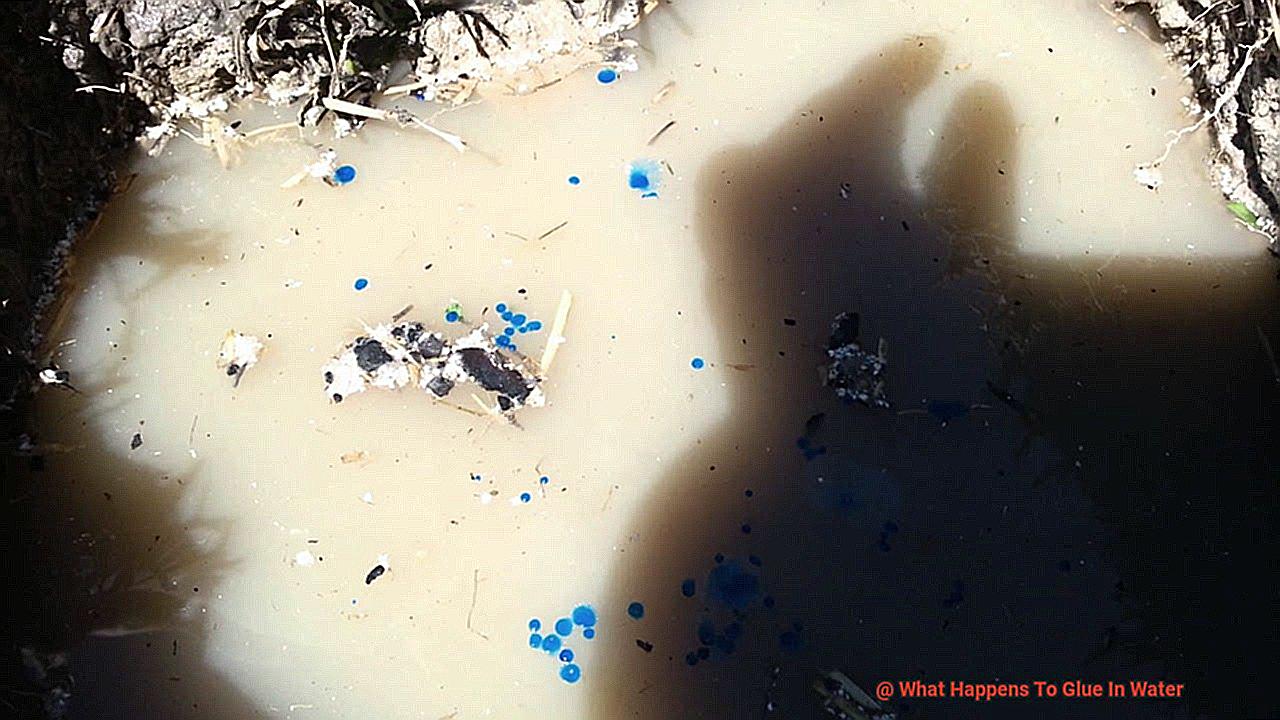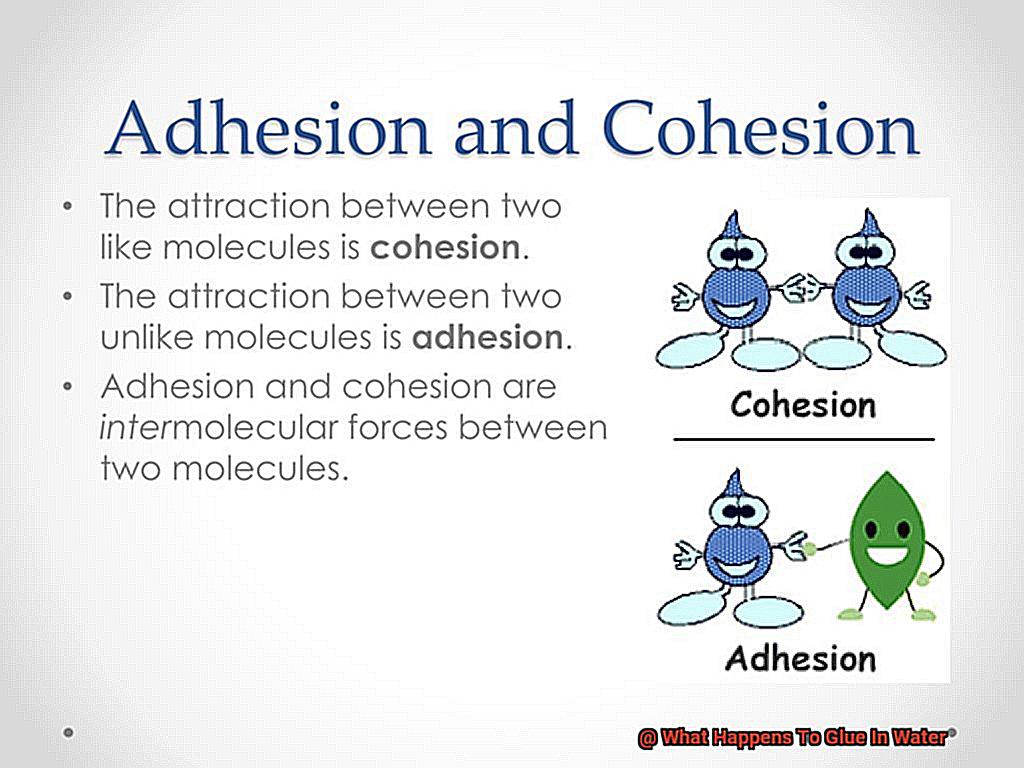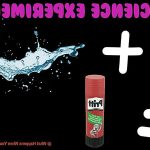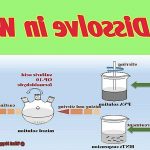Have you ever been in the middle of a crafting project, only to watch in horror as your glue-covered masterpiece slips out of your hands and into a nearby body of water? We’ve all been there. But have you ever stopped to wonder what happens to glue in water?
It’s a question that may seem trivial at first, but for those of us with curious minds, it’s an intriguing mystery waiting to be solved. In this blog post, we’ll explore the science behind what happens when glue meets water and how it can impact our craft projects and everyday applications.
So buckle up and get ready for a fascinating journey as we dive into the world of glue and water. We’ll answer questions like: Does glue dissolve or scatter in water? How do different types of glue react to being submerged? And what are some possible causes of failure when using glue exposed to water?
With our help, you’ll become an expert on the topic and gain valuable knowledge on how to apply adhesives effectively. So let’s get started and discover what happens when these two substances mix.
What is Hydrolysis and How Does It Affect Glue?
Contents
- 1 What is Hydrolysis and How Does It Affect Glue?
- 2 Factors that Affect the Rate of Dissolution of Glue in Water
- 3 Types of Glue that Dissolve Quickly in Water
- 4 Types of Glue That Do Not Dissolve Completely in Water
- 5 The Impact of Additives and Chemicals on the Solubility of Glue in Water
- 6 Tips for Properly Mixing Glue with Water
- 7 Safety Precautions When Working with Glues and Water
- 8 Conclusion
Well, let me tell you about hydrolysis and its impact on adhesives. Hydrolysis is a chemical process that occurs when water molecules break down the bonds between molecules in a substance. When glue is exposed to water, hydrolysis can cause the adhesive to lose its bonding properties and weaken or even dissolve completely.
Glue is composed of long chains of molecules called polymers, which are held together by strong covalent bonds. These bonds give the glue its adhesive properties and enable it to stick things together. However, when water is introduced, the water molecules can break down these covalent bonds through a process called hydrolysis.
The extent to which hydrolysis affects glue depends on several factors, including the type of glue, the amount of water present, and the length of time the glue is exposed to water. Some types of glue are more resistant to hydrolysis than others, such as epoxy or cyanoacrylate adhesives. However, even these glues can eventually be affected by prolonged exposure to water.
To choose the right type of glue for a particular application, it’s essential to take into account factors such as water resistance and exposure time. For example, PVA glue (polyvinyl acetate) dissolves relatively quickly in water, while epoxy glue may take longer to dissolve. Additionally, the more water there is in a solution, the faster the glue will dissolve.
It’s fascinating to note that not all glues dissolve completely in water. Some types of glue may form a gel-like substance when mixed with water, while others may become sticky and difficult to remove. This is because some glues contain additives or chemicals that affect their solubility in water.

Factors that Affect the Rate of Dissolution of Glue in Water
Firstly, it’s important to consider the type of glue. Different types of glue have varying solubility levels in water due to their chemical compositions. Water-soluble glue is designed to dissolve easily in water, making it ideal for projects that need to be disassembled or repositioned. However, solvent-based glues are waterproof and do not dissolve in water easily. So, if you’re attempting to dissolve a waterproof glue in water, you may have a bit of a challenge on your hands.
Another significant factor to consider is the temperature of the water. Warm water dissolves glue more quickly than cold water because heat increases the movement of molecules, allowing for more efficient mixing and dissolution. So, if you’re in a hurry and need your glue to dissolve quickly, try using warm water.
The concentration of glue in the water also affects its dissolution rate. A higher concentration of glue will generally take longer to dissolve than a lower concentration because more molecules require separation and mixing with the water. Therefore, if you’re trying to dissolve a large amount of glue at once, be prepared to give it some time.
Lastly, agitation or stirring can significantly impact the rate of dissolution. Stirring or shaking up the container can break down clumps of glue and increase its surface area, allowing for more efficient mixing and dissolution. So, if you’re struggling to dissolve your glue, give it a good stir or shake things up a bit.
Types of Glue that Dissolve Quickly in Water
Glue is an essential tool for many projects, but it can be frustrating when you need to remove it. Luckily, there are several types of glue that dissolve quickly in water. Let’s take a closer look at each type and how it works.
PVA Glue:
PVA glue, also known as white glue or school glue, is one of the most popular types of glue that dissolves quickly in water. It is commonly used in crafting and woodworking projects due to its ease of use and reliability. PVA glue is made from polyvinyl acetate and water, which means it can dissolve quickly when exposed to water.
Animal-Based Glue:
Another type of glue that dissolves quickly in water is animal-based glue, such as hide glue or fish glue. These glues have been used for centuries in woodworking and musical instrument construction due to their strong adhesive properties. They are made from animal collagen, which means they can easily be dissolved with warm water. This type of glue is ideal for projects that require a strong bond but may need to be taken apart or repaired in the future.
Cyanoacrylate Glue:
Cyanoacrylate glue, also known as superglue, is a popular adhesive that can dissolve in water over time. However, it’s important to note that this type of glue is not designed to be water-soluble and can be difficult to remove once it has dried. It’s best to avoid using superglue in situations where it may be exposed to water.
Specialty Glues:
Specialty glues are another option for those who need a glue that dissolves quickly in water. Water-soluble fabric glues and temporary wallpaper adhesives are two examples of specialty glues that are designed to be easily removed with water. These types of glues are ideal for temporary applications or situations where the adhesive needs to be removed easily.
Types of Glue That Do Not Dissolve Completely in Water
Glue is a vital component in many applications, from crafting to construction. However, not all glues can withstand exposure to water. In this article, we will delve into the different types of glue that do not dissolve entirely in water and explore their unique characteristics.
Epoxy Glue
Epoxy glue is a versatile two-part adhesive that consists of a resin and a hardener. When mixed, it creates a strong, waterproof bond that can withstand exposure to water and other harsh conditions. Epoxy glue is commonly used for bonding materials like metal, plastic, and wood. It’s also an excellent choice for repairing boats and other watercraft or for sealing leaks in water pipes.
Cyanoacrylate Glue
Cyanoacrylate glue, also known as superglue, forms an instant bond and is commonly used for bonding materials like rubber, metal, and plastic. This adhesive can withstand exposure to moisture without dissolving, making it a popular choice for outdoor applications. Due to its fast-drying properties, cyanoacrylate glue is ideal for small repairs and DIY projects.
Polyurethane Glue
Polyurethane glue is another type of adhesive that does not dissolve entirely in water. This glue forms a strong bond when exposed to moisture and can be used for bonding materials like wood, metal, and plastic. Polyurethane glue can withstand exposure to water without dissolving, making it ideal for outdoor applications such as decks and patios. It’s also heat-resistant and can handle extreme temperatures.
Marine-Grade Adhesive
For use in aquatic environments, marine-grade adhesive is designed explicitly to withstand saltwater and other harsh marine conditions. It’s ideal for repairing boats, docks, and other watercraft. This specialized adhesive is formulated with unique ingredients that make it resistant to water and other corrosive substances.
Specialized Waterproof Glues
In addition to the above types of glue, there are also specialized waterproof glues available for specific applications. For example, PVC cement is designed explicitly for use in plumbing and can withstand water pressure. Similarly, waterproof tile adhesive is ideal for bonding tiles in wet environments such as bathrooms and kitchens.
The Impact of Additives and Chemicals on the Solubility of Glue in Water
Glue is a versatile adhesive that can be used in a variety of crafting and construction projects. However, when it comes to water exposure, the solubility of different types of glue can vary greatly. The presence of additives and chemicals in the glue can also impact its reaction to water.
One commonly used glue is PVA glue, which is often found in woodworking and crafting projects. This water-based adhesive contains polymers that are not soluble in water, so it will not dissolve completely when exposed to water. However, if PVA glue contains plasticizers or softeners, its solubility in water can be affected. These additives can make the glue more pliable and easier to work with but can also make it more susceptible to breaking down when exposed to water.
In contrast, super glue (cyanoacrylate) is designed to be waterproof and forms strong bonds with surfaces. It is not soluble in water at all and will not dissolve or break down when exposed to water.
To choose the right glue for your project involving water exposure, it’s important to understand the properties of each type of adhesive. Reading labels carefully and researching the impact of additives and chemicals on solubility can help you make an informed decision. Whether you’re working on a boat or a bathroom renovation project, knowing how different glues react to water can ensure a successful outcome.
Tips for Properly Mixing Glue with Water
When it comes to mixing glue and water, there are several important factors to consider to ensure that your project turns out perfectly. Here are some tips for properly mixing glue with water:
Use the Right Type of Glue
It’s crucial to use the correct type of glue when mixing with water. PVA glue is water-soluble and can be mixed with water, while epoxy glue is not water-soluble and should not be mixed with water. Make sure you read the instructions on the bottle or packaging before you begin.
Use Warm Water
Warm water helps to dissolve the glue more quickly and evenly, resulting in a smoother mixture. However, it’s important not to use hot water as this can cause the glue to break down and become less effective.
Stir Slowly and Thoroughly
Pour the glue into the water slowly, stirring constantly to ensure an even mixture. It’s important to take your time and make sure there are no lumps or clumps of unmixed glue. Stirring in one direction will prevent air bubbles from forming in the mixture.
Test the Consistency
The consistency of the mixture will depend on what you’re using it for. If you need a thinner consistency, add more water; if you need a thicker consistency, add more glue. It’s crucial to test the consistency before applying the mixture to your project.
Only Mix What You Need
Once mixed, the glue and water mixture should be used immediately. If left sitting for too long, it will start to thicken and lose effectiveness. If you need to mix more glue, only mix as much as you need for your project.
Safety Precautions When Working with Glues and Water
If you’re looking to create a masterpiece using glues and water, it’s crucial to keep safety in mind. As an expert in this field, I’ve compiled some essential safety tips to help prevent any potential hazards while working with these materials. Let’s explore.
Firstly, it’s important to choose the right type of glue for your project. Different types of glue have different properties and may react differently when exposed to water. For instance, PVA glue can be easily diluted in water and may lose its adhesive properties when exposed to water. Therefore, it’s crucial to choose the right type of glue that suits your project.
Next, wearing protective gear such as gloves, goggles, and a mask is essential when working with glues and water. These materials can release toxic fumes or vapors that can harm your skin, eyes, and respiratory system. Hence wearing protective gear is necessary to prevent any potential harm.
In addition to wearing protective gear, it’s important to work in a well-ventilated area when mixing glues and water. This will help prevent any buildup of fumes or vapors from the glue that may cause harm. It’s best to open windows or use a fan to improve air circulation in your workspace.
Proper disposal of unused glue or materials that have come into contact with glue and water is equally important. Contact your local waste management facility for guidance on how to dispose of hazardous materials safely.
-42-ku-3ti0″ >
Also Read: Is Super Glue Waterproof? – Glue Things
Conclusion
To wrap up, the impact of water on glue is a captivating subject that can significantly impact our crafting and construction endeavors. Once glue comes into contact with water, hydrolysis takes place, which causes the adhesive to lose its bonding properties and weaken or dissolve entirely. The degree to which hydrolysis affects glue depends on several factors, such as the type of glue, the amount of water present, and the duration of exposure.
Various types of glue are available in the market that have different solubility levels in water due to their chemical compositions. Some glues dissolve quickly in water, like PVA glue and animal-based glue, while others like epoxy and cyanoacrylate adhesives are waterproof and do not dissolve easily in water.
It’s essential to select the right kind of glue for your project involving water exposure by carefully reading labels and researching the impact of additives and chemicals on solubility. Additionally, proper mixing techniques with warm water and testing consistency before application are crucial. To ensure safety when working with glues, it’s vital to wear protective gear and dispose of hazardous materials safely.






